A pulsating stream of colorful lights brought a bit of a futuristic disco feel to the far end of the Design Miami/ 2021 tent last week. For its annual design commission, luxury automotive brand Lexus called upon local architect Germane Barnes of Studio Barnes to create an installation inspired by the new Lexus LF-Z Electrified Concept car, whose highly anticipated, electric design will be released in early 2022. The installation provided a sneak peek at the new vehicle in the form of a suspended steel wireframe, a floating line drawing of the design activated with those colorful heartbeats, two lit archway swings and Barnes's first furniture collection, inspired by the Art Deco architecture of South Beach. But it also represented a much larger call to action, one to which Barnes has dedicated his practice and his work as a professor at the University of Miami School of Architecture.
There, Barnes directs the Community Housing Identity Lab and through it, examines how Black residential neighborhoods in Miami are affected by the built environment, climate change and citywide urban planning. For his Design Miami/ installation, ON/, he collaborated with a few of his architecture students and Indrit Alushani, the manager of the University’s Responsive Architecture and Design Lab to explore this further: how does the future affect us all? And what does it need to protect our most vulnerable neighborhoods? Carbon neutrality, say Barnes and Lexus, is step one.
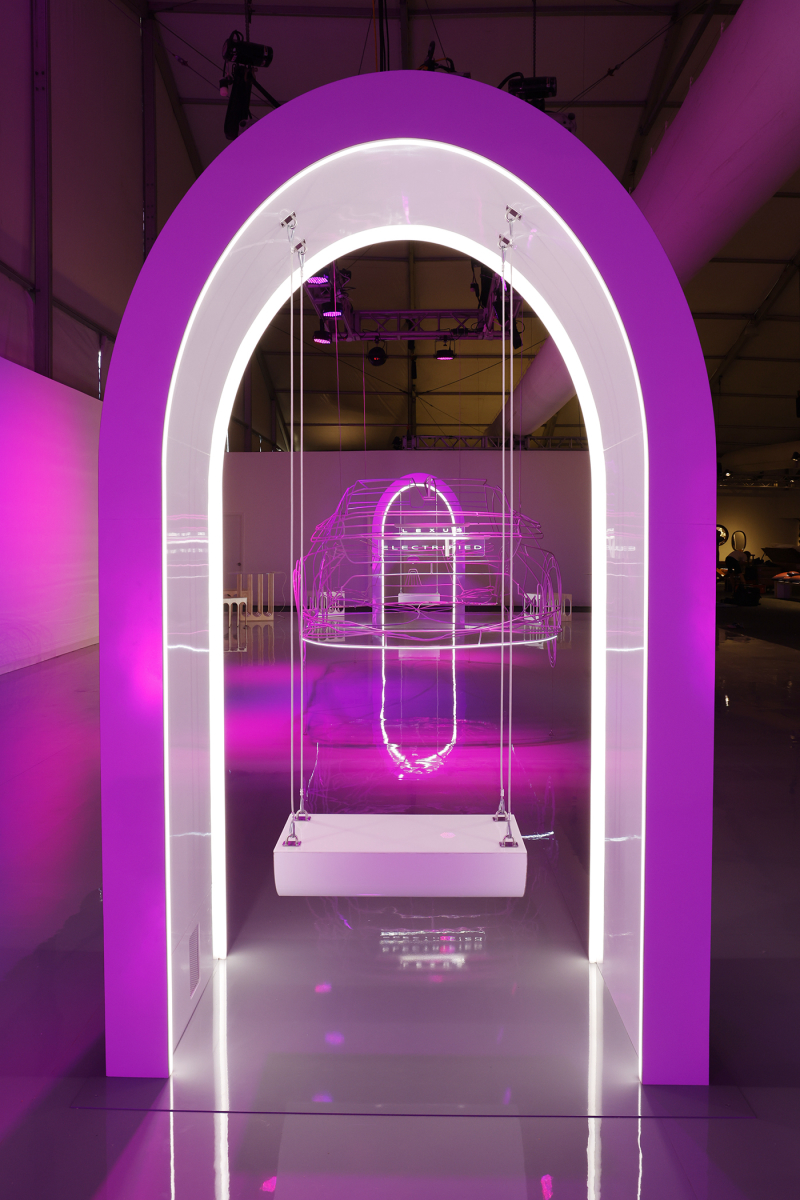
Elizabeth Fazzare: Tell me about the immersive aspect of the piece.
Germane Barnes: Lexus approached me with the idea of finding a way to celebrate their new carbon neutral and electric-forward approach to all their vehicles. I took the idea of stripping the car down to the most essential lines based on the craftsmanship of the original designers and then embedding lights into that. We’re able to get that futuristic feel with the car feeling completely weightless because it’s just the wireframe.
You have these multiple strands of lights that are all pulsating simultaneously while there’s a secondary light source above that changes colors. It looks as though the entire installation is changing while you’re physically in the space.
EF: Stripping it down to the lines also makes it more architectural. It’s more like a line drawing or the first step of a design.
GB: That was the goal. You see all of those very delicate images by the craftsman designing and they have very soft lines, but then they become something else. It becomes a steering wheel, the seats, the chassis, the fender. Lexus gave me the creative license to then rip the car apart and get it back down to its bare bones.
EF: Is this the first time that you’ve worked with light as well?
GB: Yes! I am very lucky to be at a place where very other talented people are able to help with the things that I don’t know much about. I collaborated with Indrit Alushani, the manager of the Responsive Architecture and Design Lab at the University of Miami, who understands lights. I told him my vision and he gave me multiple ways to achieve that goal. And then once we found the exact look we wanted, he’s able to manipulate it to make it look vibrant.
That’s all based on him because I’m not a lighting expert, but I do understand the way activity works: designing effective surfaces to have light bounce off makes the installation better.
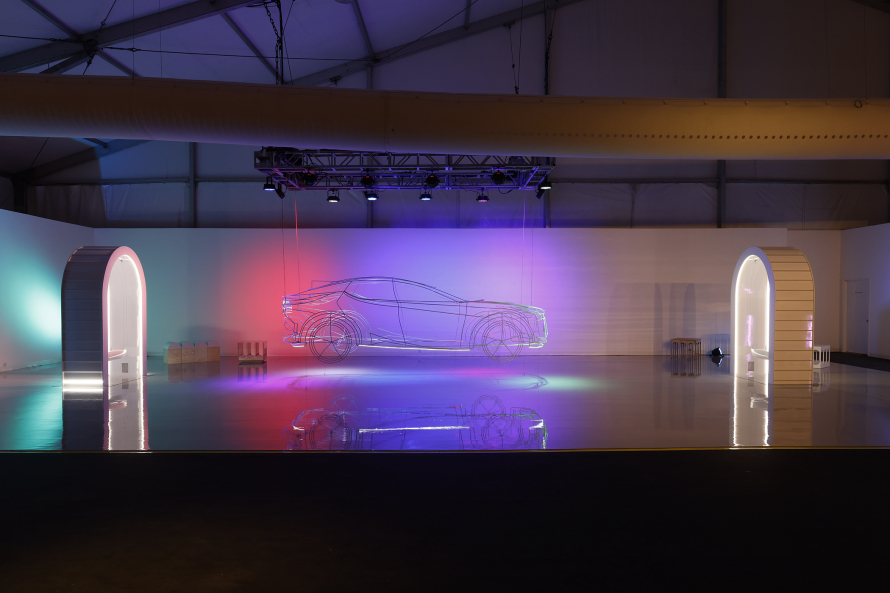

EF: Are the installation’s color changes something that you program together or is it responsive?
GB: The title of Design Miami/ this year is Human•Kind. And Lexus has a very human-centered approach. We combine those two to find a way to shrink the globe so that many people who can’t be here physically for various reasons of covid, the pandemic, travel restrictions and ask: How can we make this project larger than just the physical space?
We partnered with Lexus to create a digital platform that allows people from around the world to scan the QR code or go to the website and manipulate the lights inside of the physical space. Then, every single day, we change the lights in person to match it.
I have an amazing team. I have a couple of interns, students at the University of Miami, who have also been very integral to the entire process. They’re super excited about going through all the submissions and be judge and jury to pick the winners.
EF: Tell me about including your intern-students from the University of Miami. Why was it important?
GB: The biggest thing was when I was speaking to the Lexus brand was the idea of, how do you project design going forward? How do we look at the future design? How do we look at future designers?
So, wait a minute, you want future designers? I have them, they’re 19 or 20 years old and they’re literally my students. Lexus clearly only asked for me, but why not pay it forward to help someone else? The moment they gave me the opportunity to collaborate as opposed to keeping it totally Studio Barnes, I reached out to the RAD Lab to handle the technological aspects. I reached out to my students to ask if they want to be a part of project. In the end, I think you have a more cohesive and robust proposal.
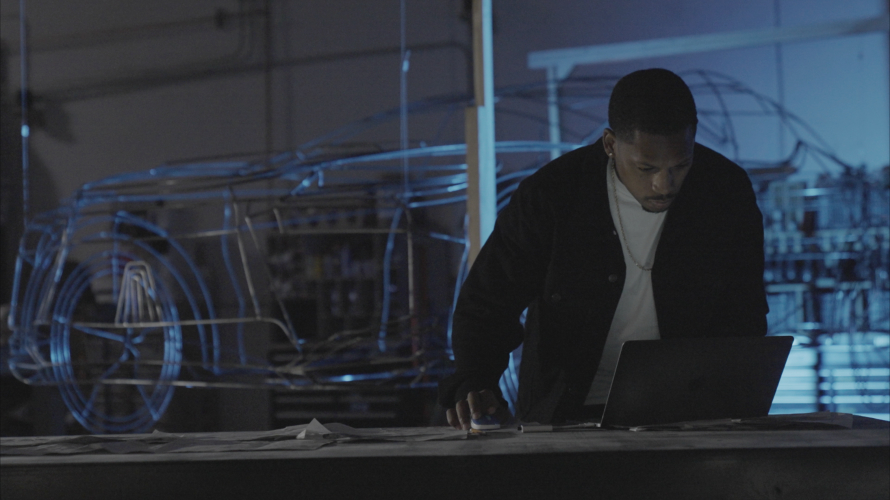
EF: I know that having that mentorship aspect to your practice is really important.
GB: I’ve been very blessed to have people in my life that have opened doors for me. None of this stuff comes in a vacuum. You have to be kind to people. I think why I get such good results out of things that I create is because the people who are part of the process get celebrated for being a part of the process.
EF: I think that’s a big problem with architecture and the problem with the starchitect model: there is usually one person celebrated and it’s pretended like they have all these skills and they’ve done it all on their own. And it’s never really that
GB: Nobody has the capacity to be able to do everything. One of the biggest persons that has an impact on your career is typically your professor first. You spend a lot of time with them as you’re makings things. That’s what you have access to. So, when you have someone that’s open and kind and willing to allow you to be a part of their process, you have a one-on-one mentor that helps you get past a lot of the barriers to architecture, specifically economic.
Jennifer Bonner was my mentor, who’s a star in her own right. I’m able to take the same opportunity and say to my assistants, “Hey, this is for you to put this in your portfolio, and you have full rights to say you were part of it.”
EF: It's exciting to support architects in Miami as well in something different from towers.
GB: We don't have enough cultural institutions to sort of counter the typical Miami housing tower with blue-glass windows. Something different is always a nice alternative to the status quo. My installation sort of is indicative of that because it also references the Miami art deco history with some of those geometries that are embedded in the furniture: arches and concave concrete bases. And the wood vernacular is also very indicative of south Florida. Wood plus concrete is our whole tropical modernism.

EF: It makes a space communal too. Being allowed to sit on the furniture and touch the installation helps break down the elitism of the location and the luxury brand you’re working with. After all, the future is for everyone.
GB: Absolutely. Lexus has been very open to me creating an installation like this, and they were very excited when I told them I wanted users to engage with it. The title of the installation explores the idea of pushing things forward as opposed to being static, understanding the world, how it’s resilient. Our capacity to live within this world may not be resilient, so we have to be aware of the building materials we’re using, climate interactions and these types of things.
EF: Being “on” and aware to climate changes is especially important. It’s at the forefront of everything and should be at the forefront of everyone’s thoughts.
GB: A lot of our curriculum at the University of Miami School of Architecture is based on climate resilience because we understand the critical nature of living in a water vulnerable location. A lot of the work I do with my research lab is based off of water vulnerable Black communities. With Lexus giving me the green light, this is a serendipitous proposal because you’re talking about human-centered approach and my practice is about identity; you’re talking about carbon neutrality and my practice is about making sure that climate doesn’t affect vulnerable neighborhoods. All these things pair perfectly.
EF: Have you seen your students also propose their own projects on those topics?
GB: All the time. Because they were born and raised in Miami, they only know sea level rise. They only know flooding. They only know, unfortunately, things like Hurricane Irma, Hurricane Andrew. But then when they get to design things and use design as a tool to combat some of these things, I think it’s a positive development.


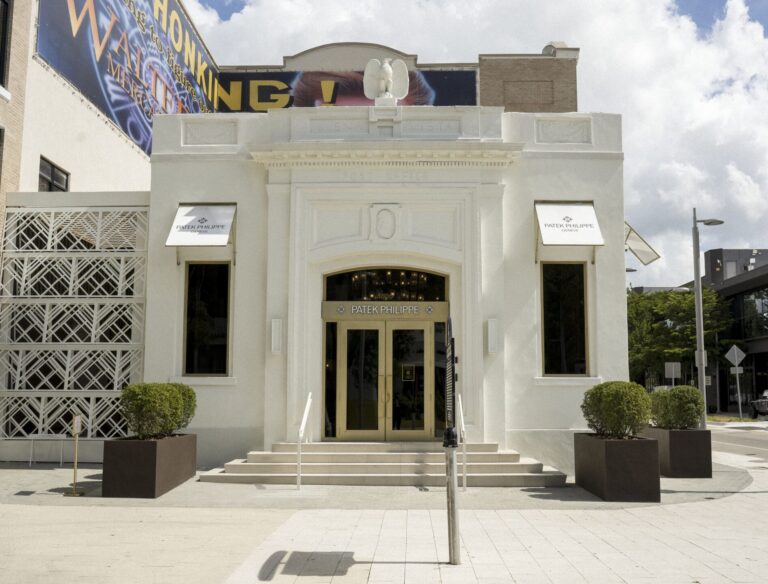


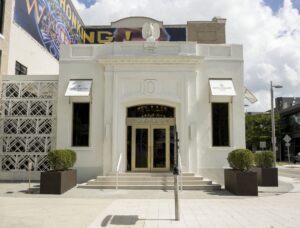




 in your life?
in your life?

